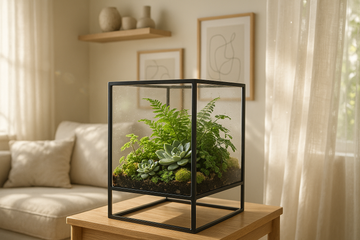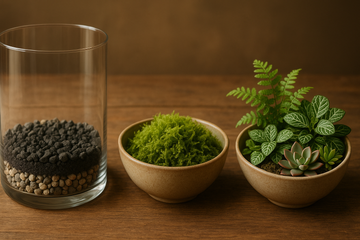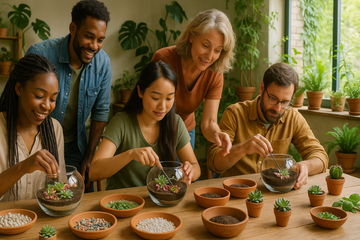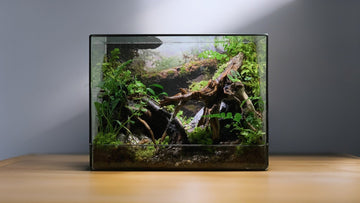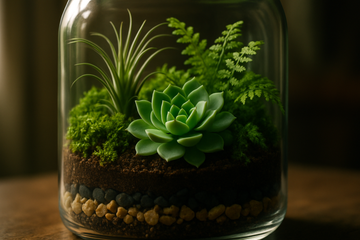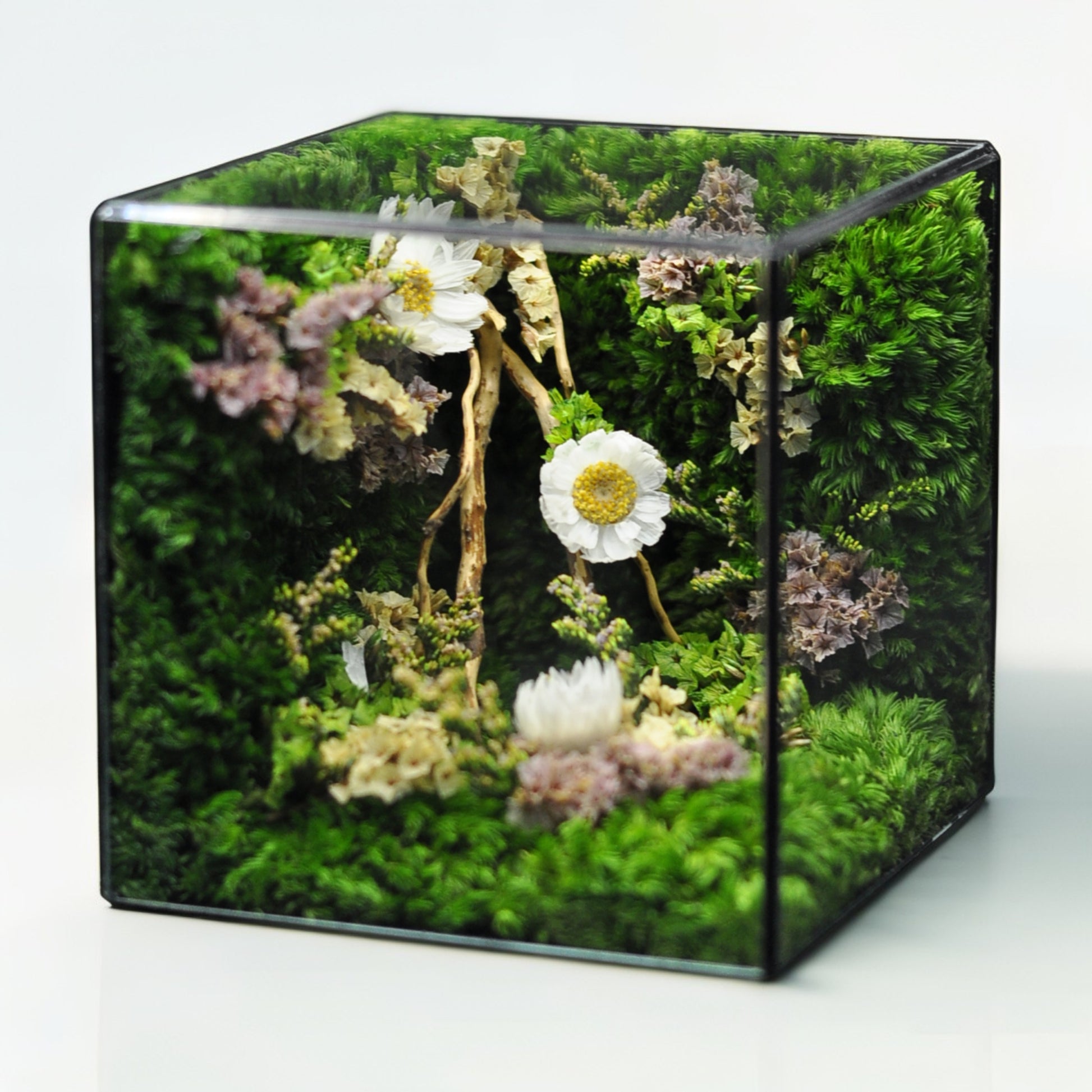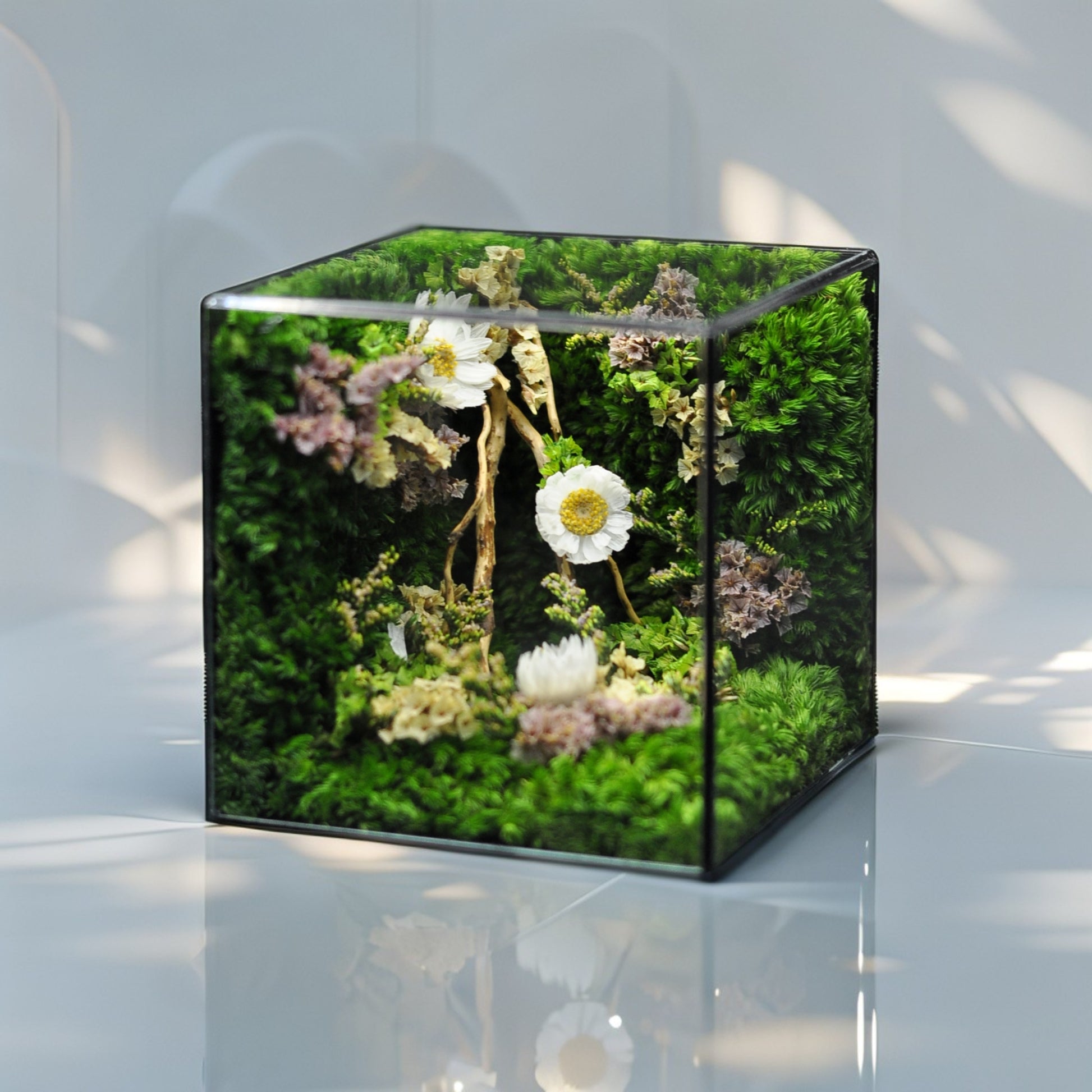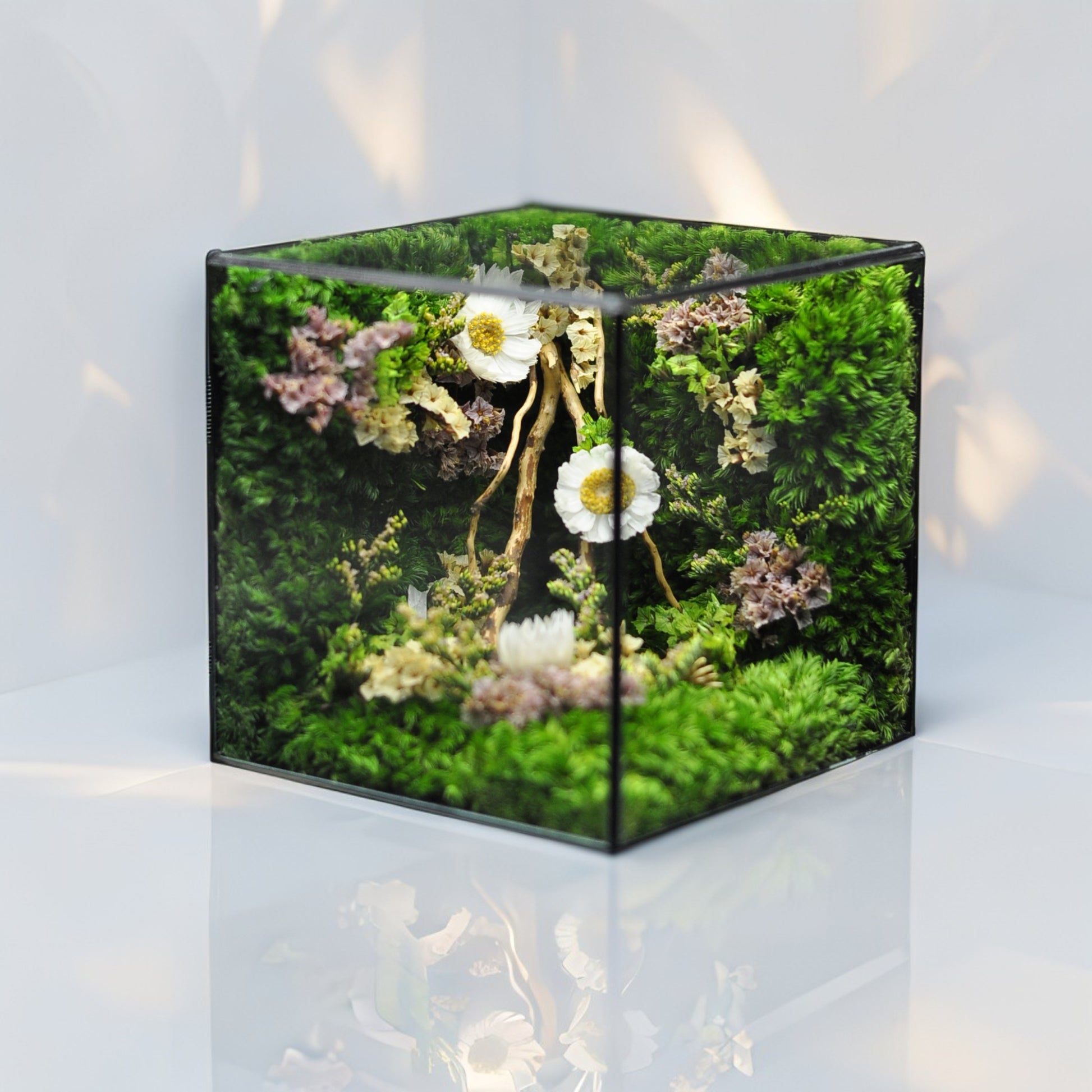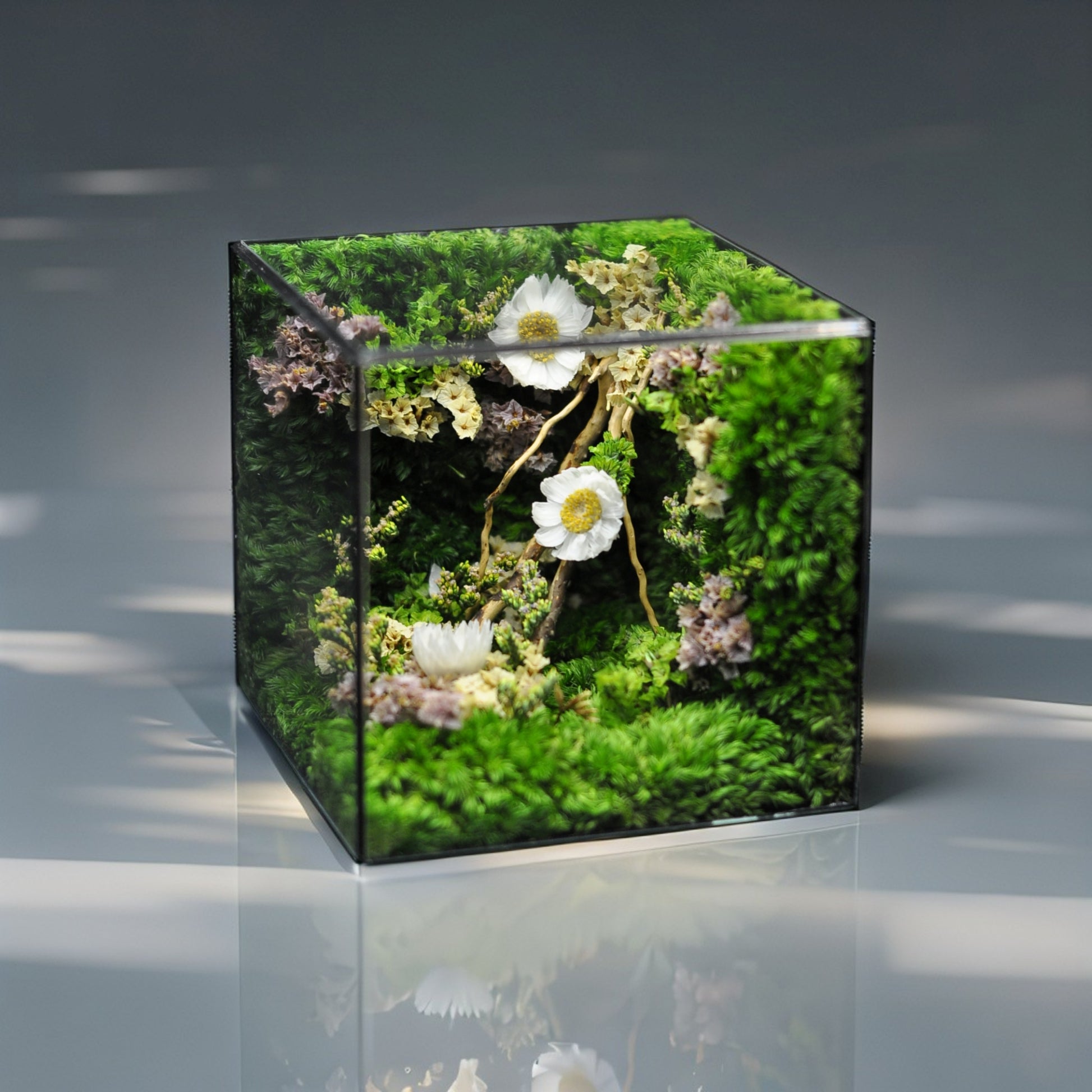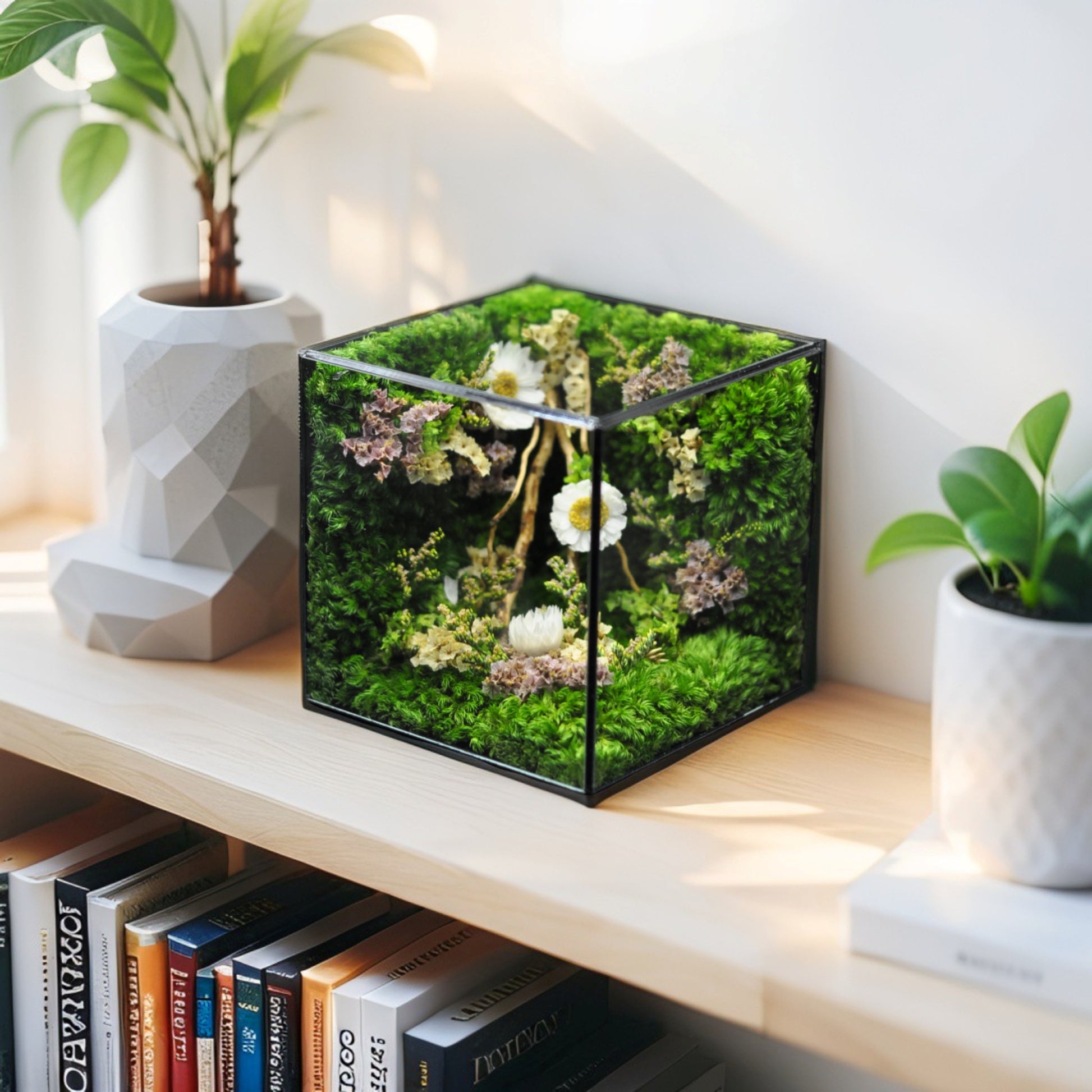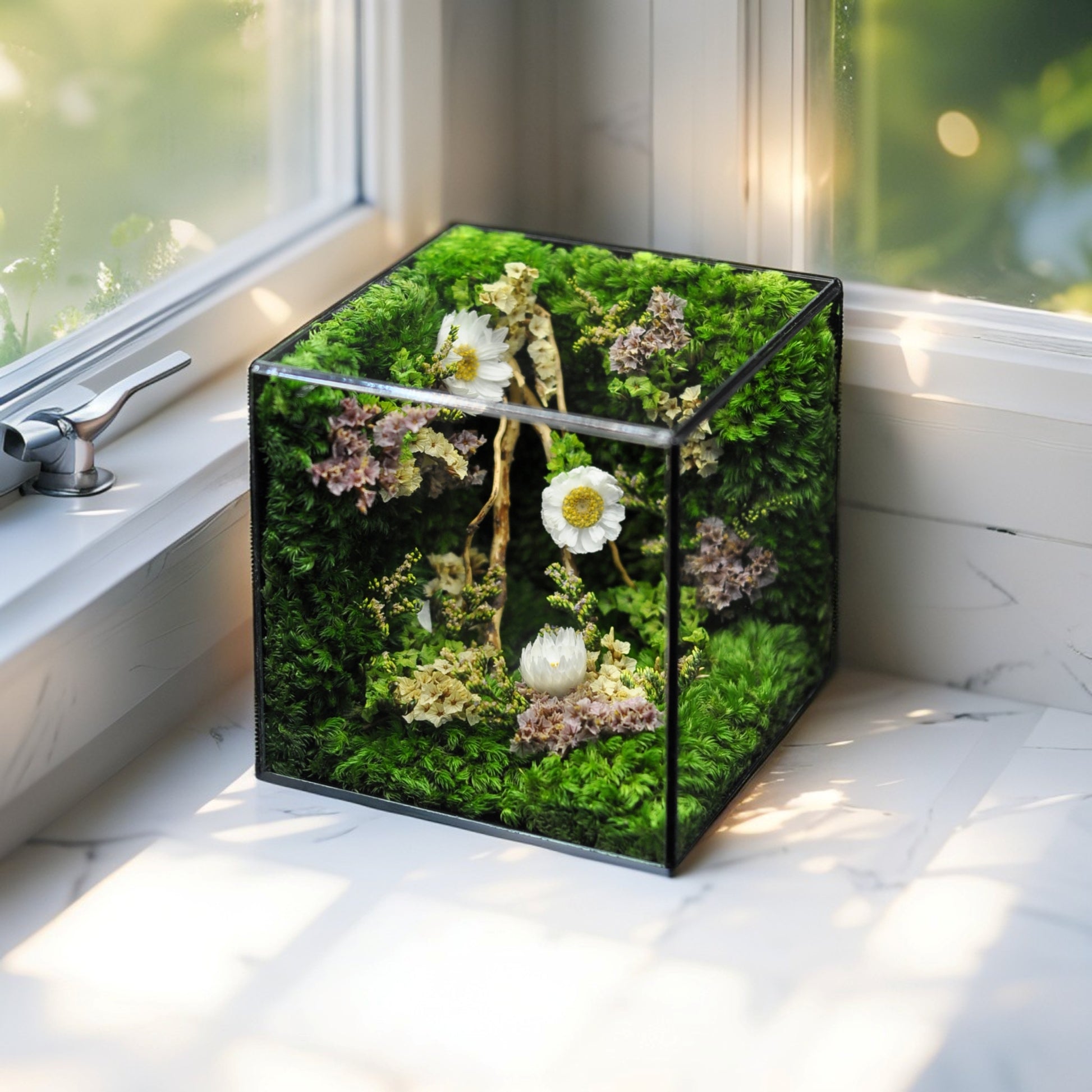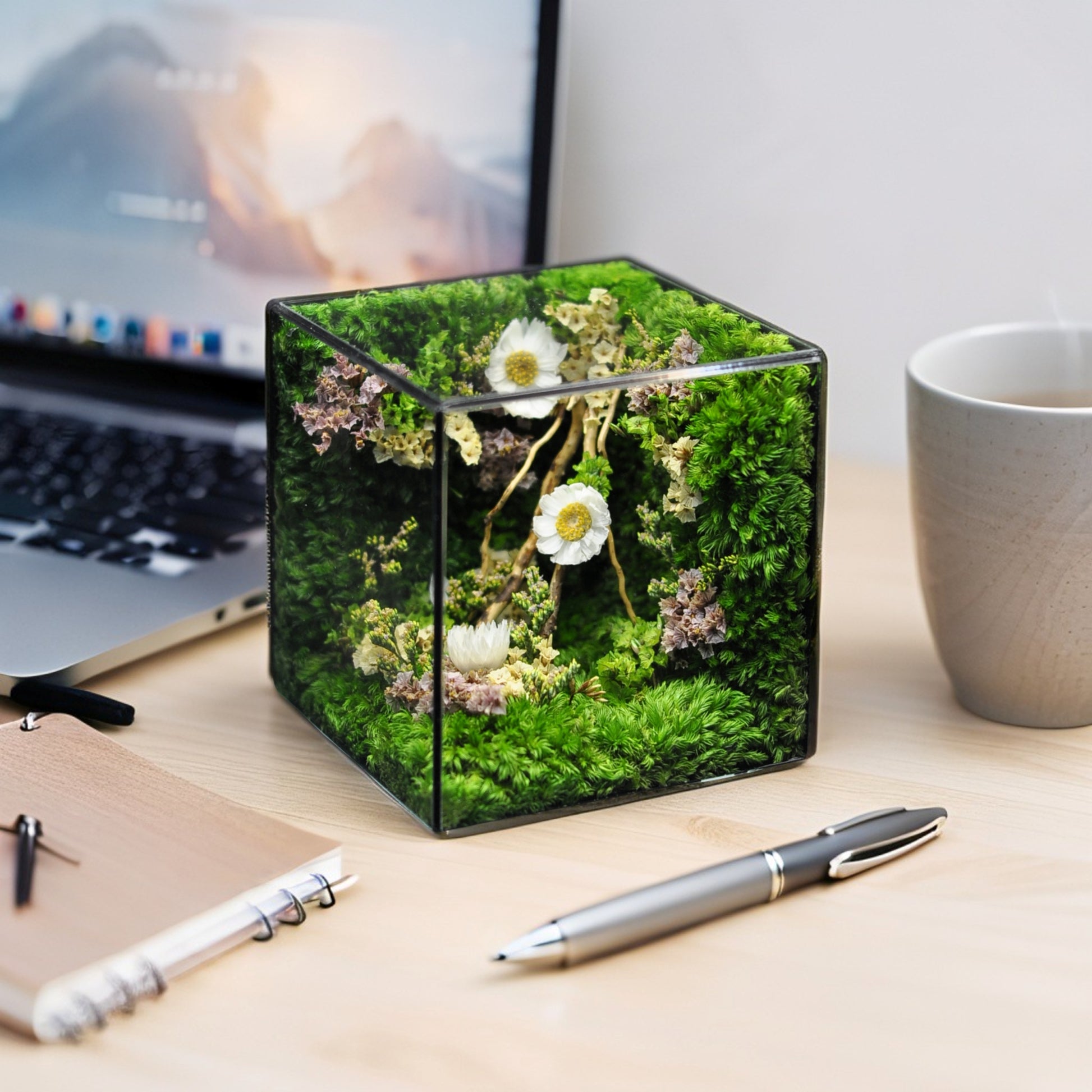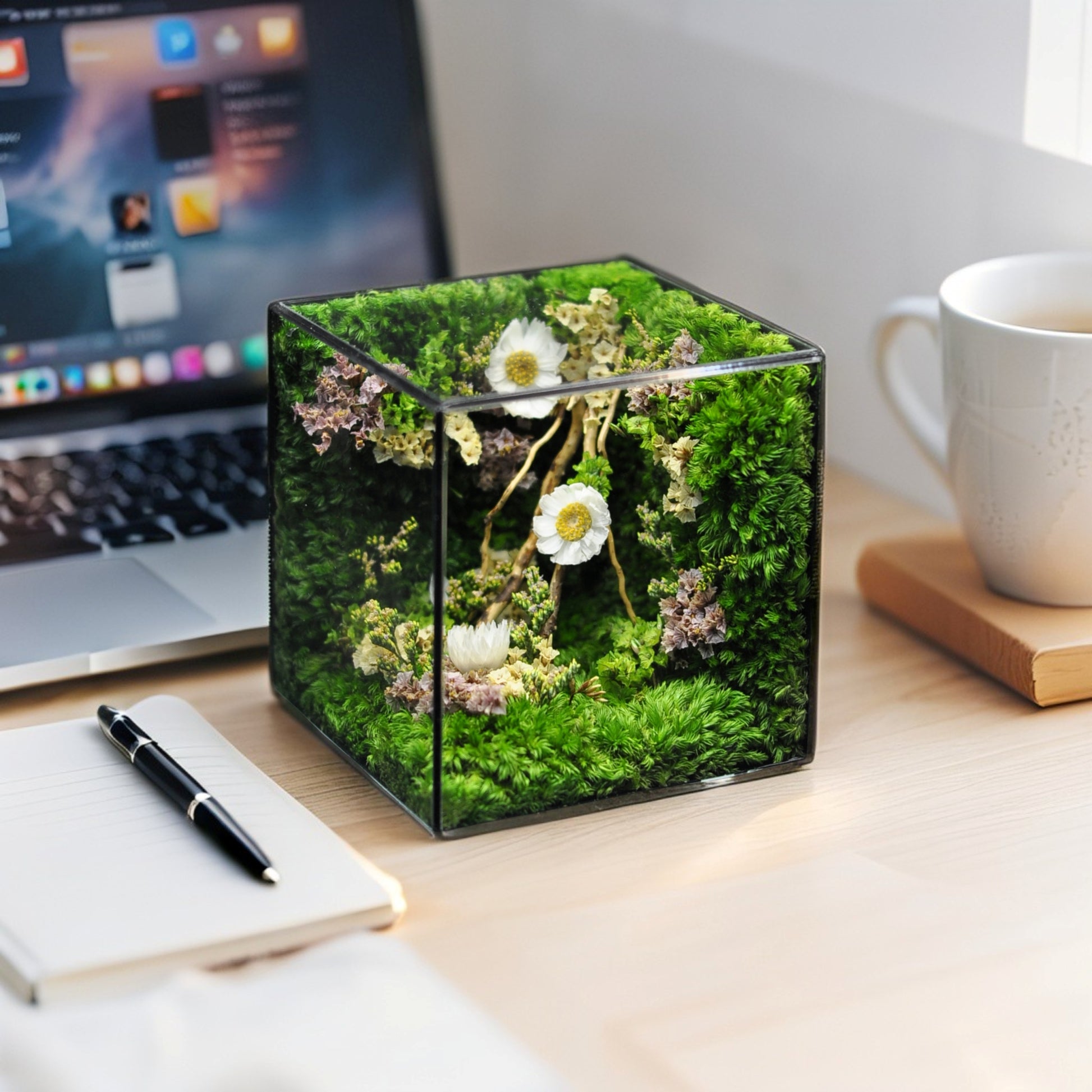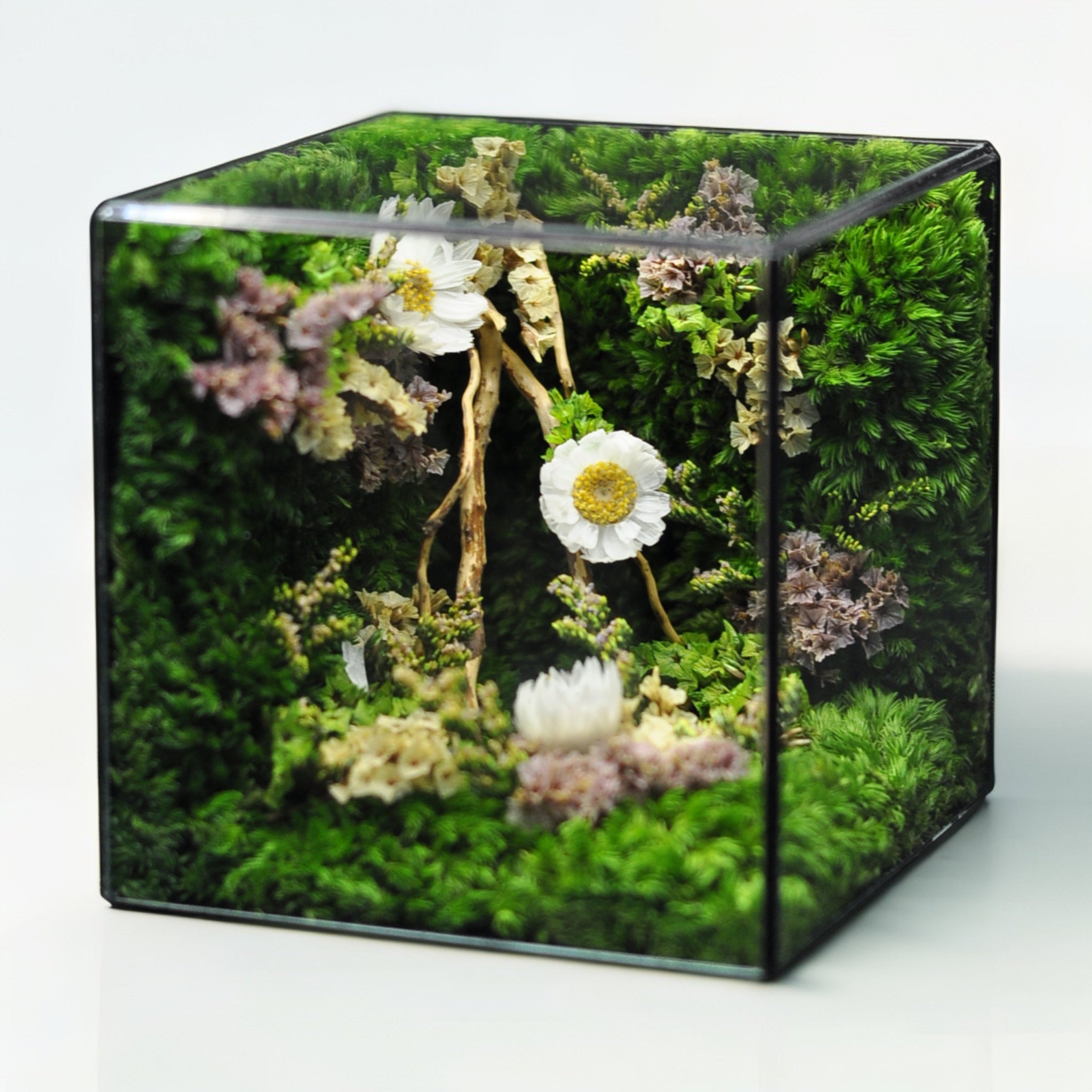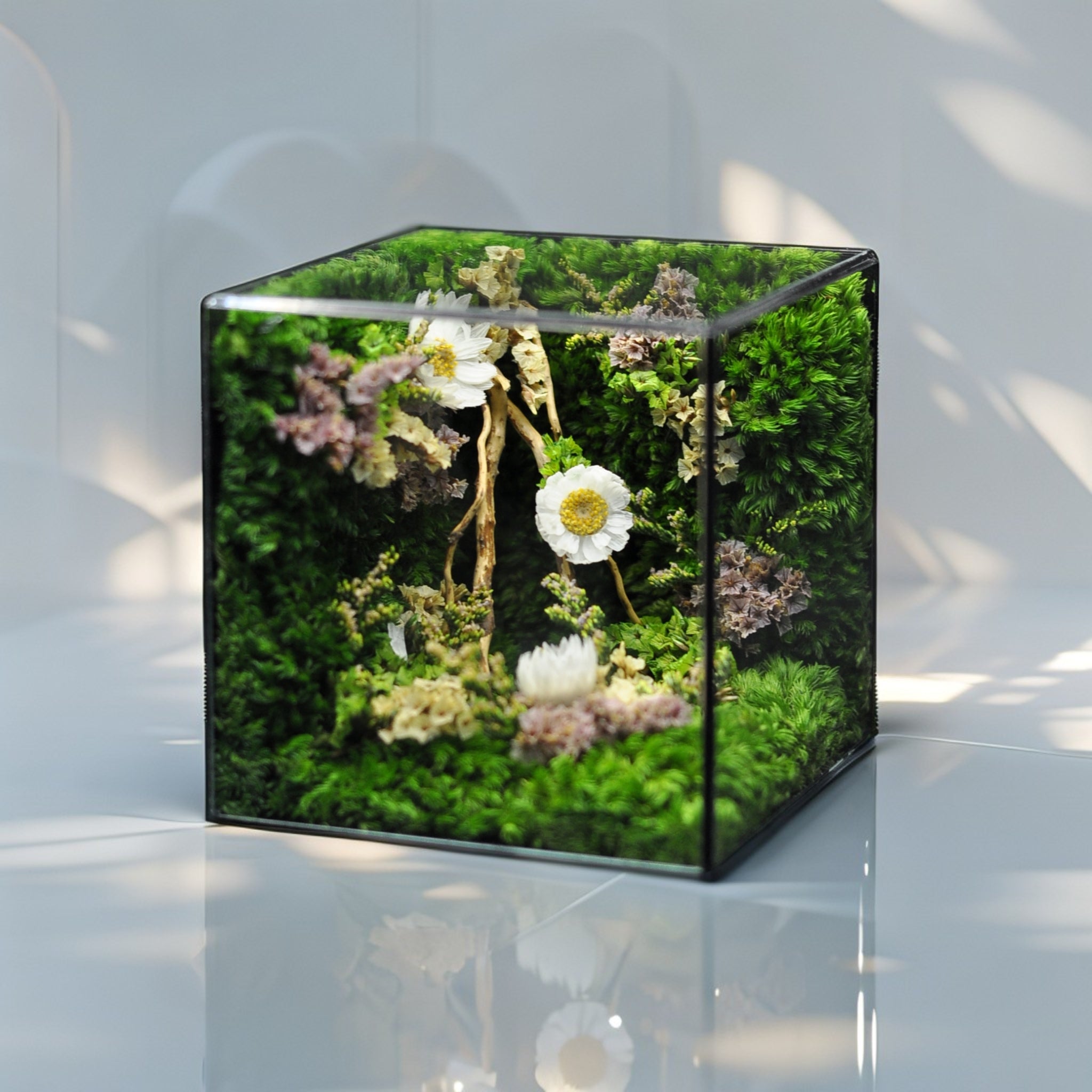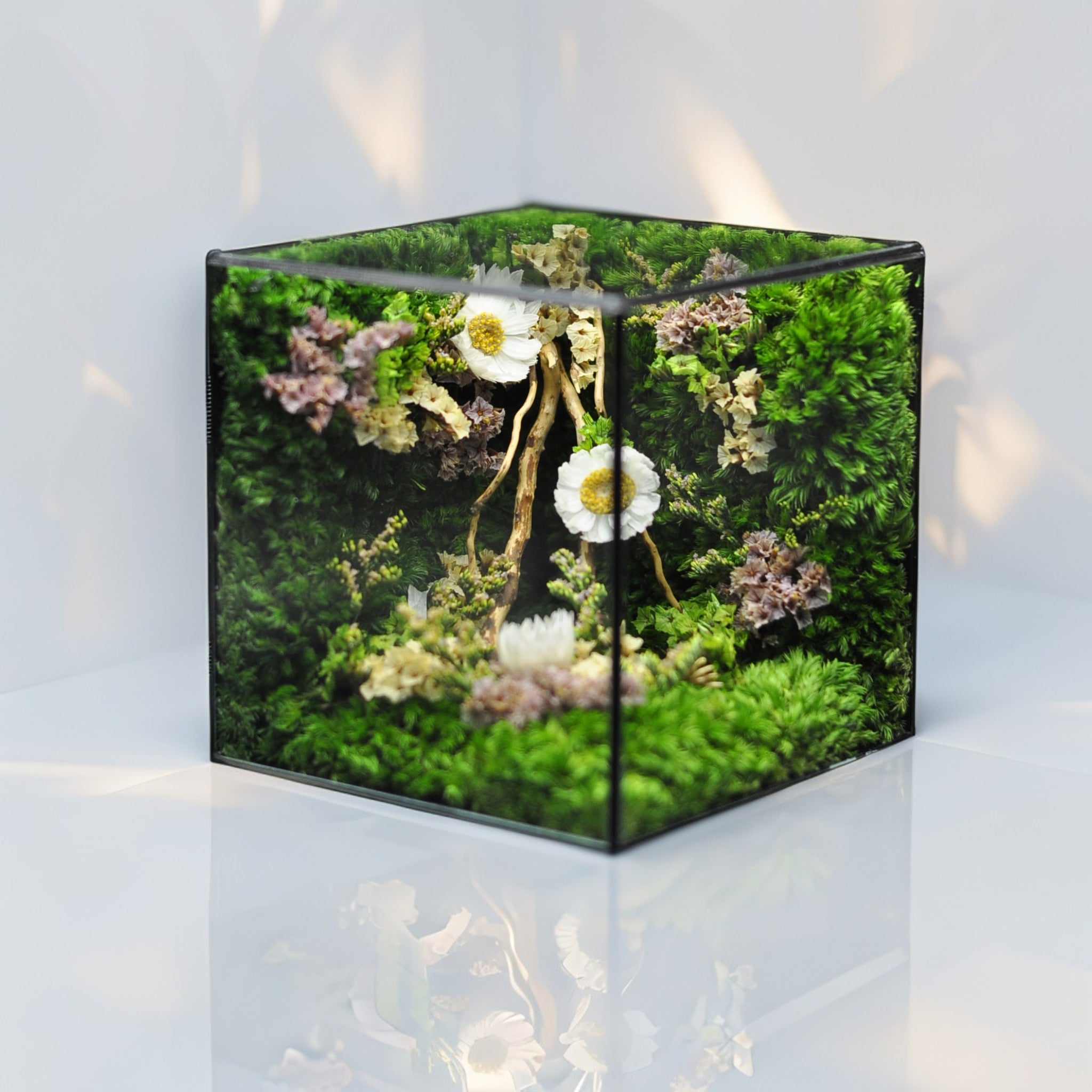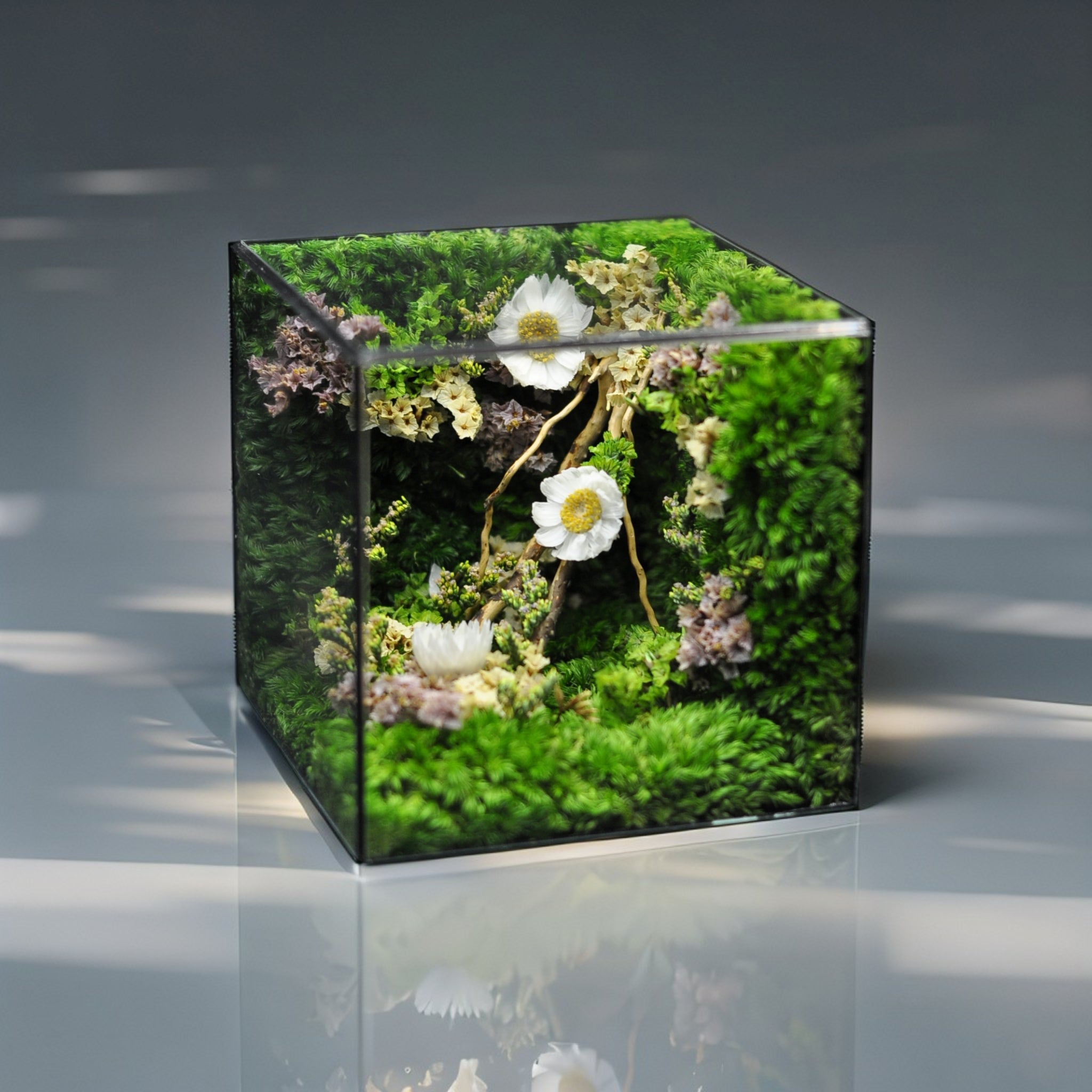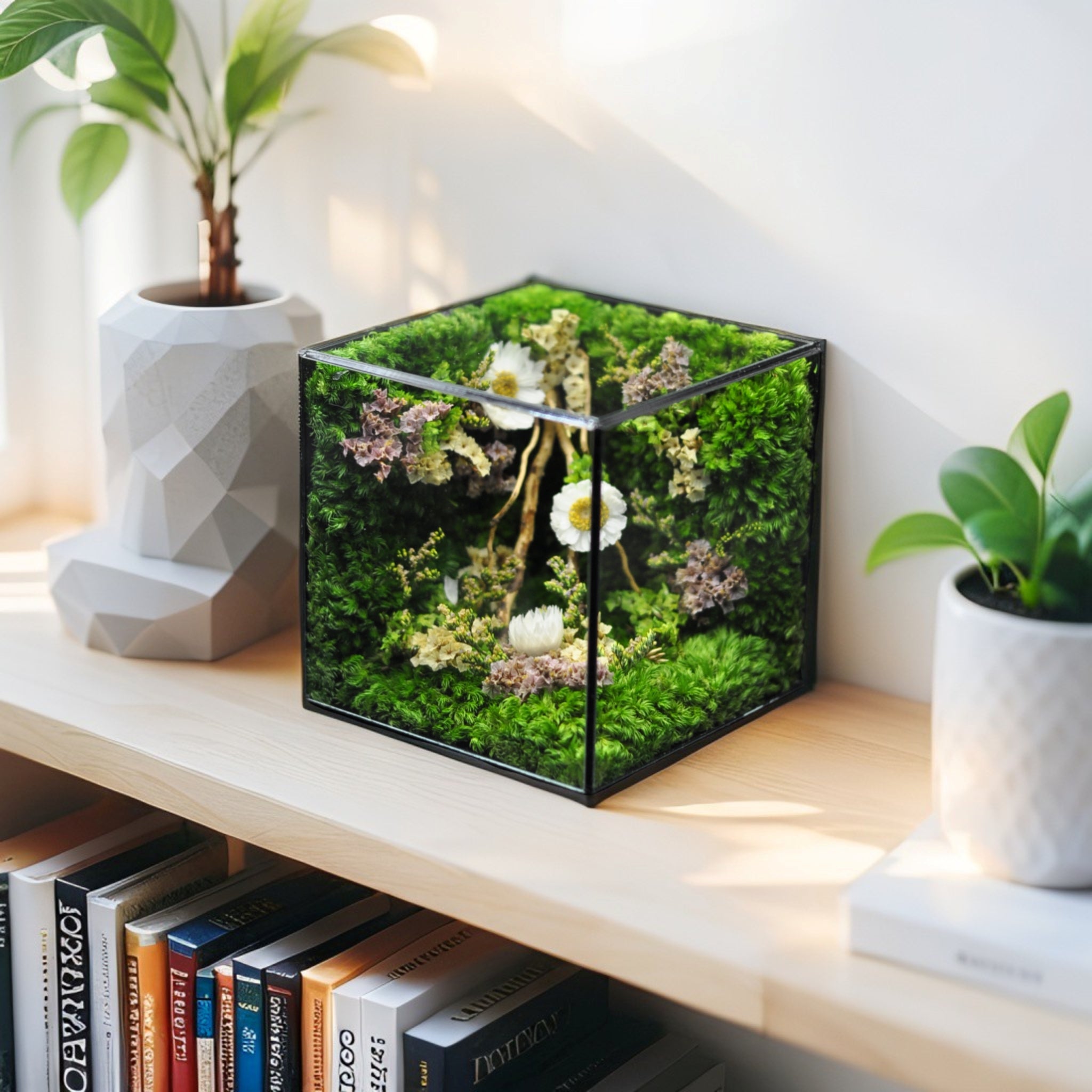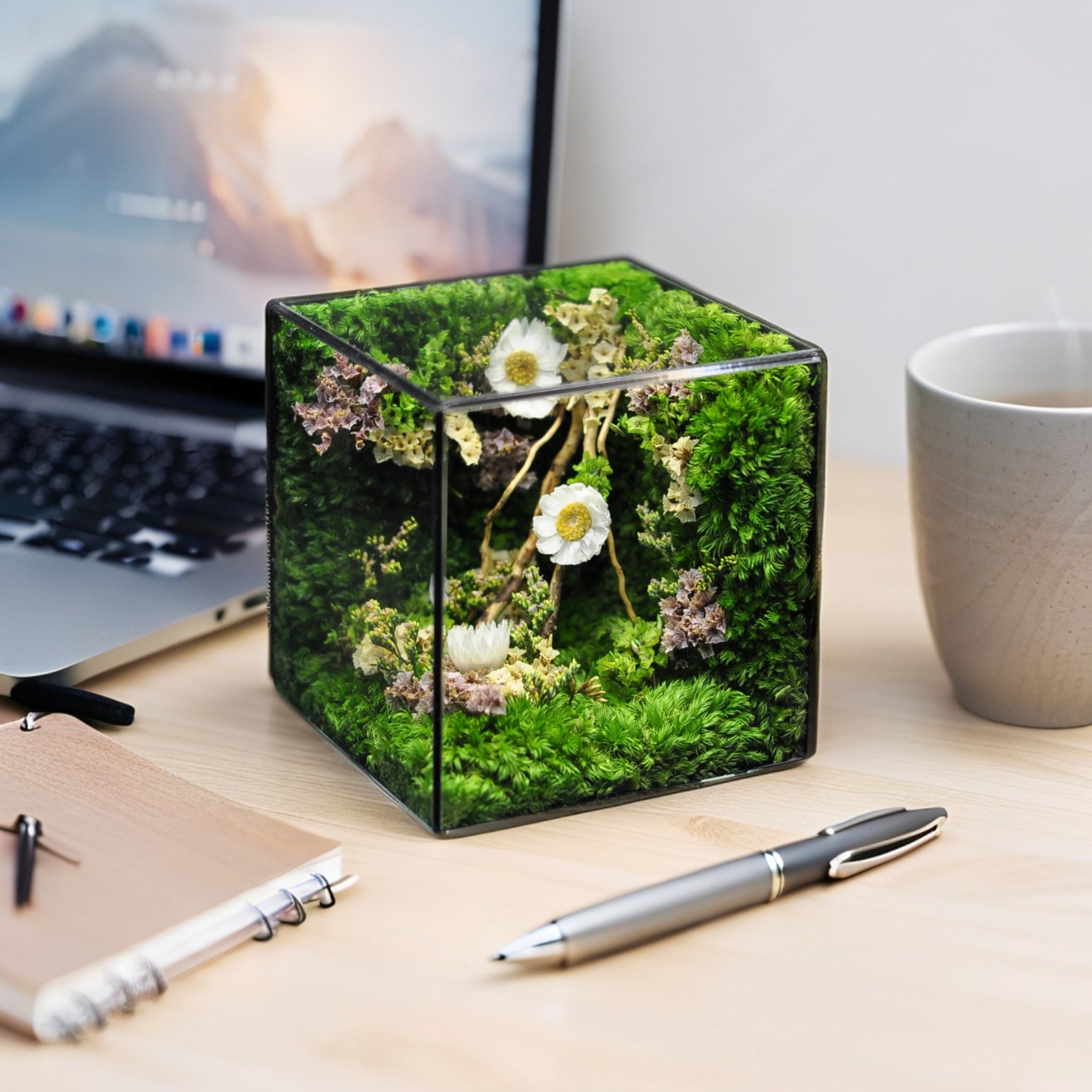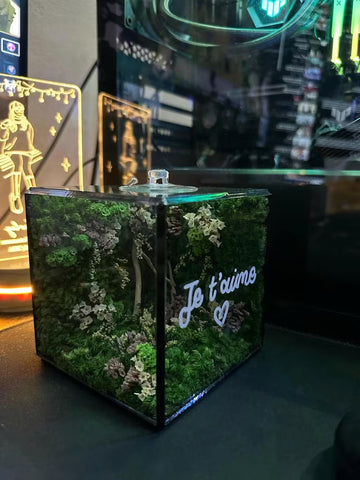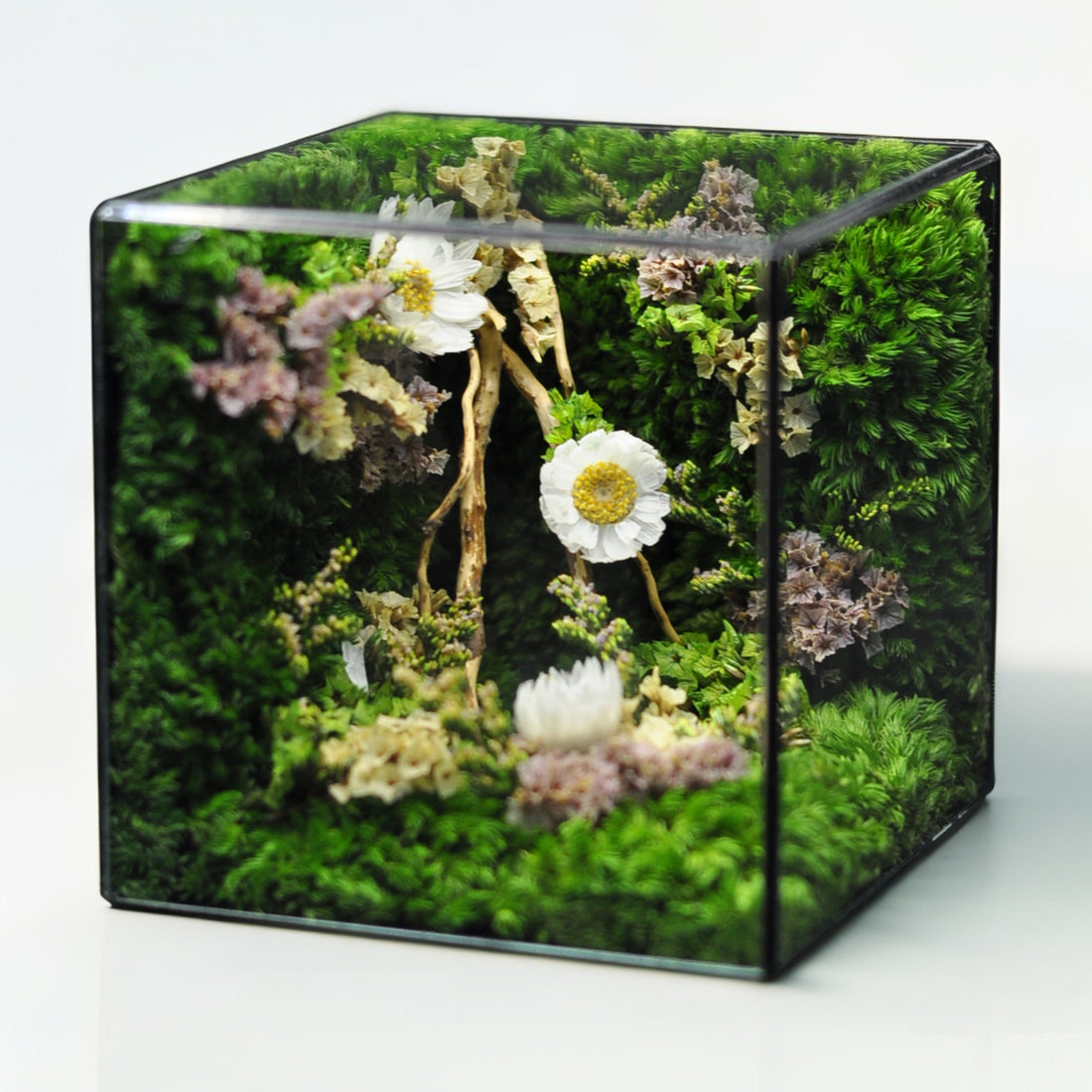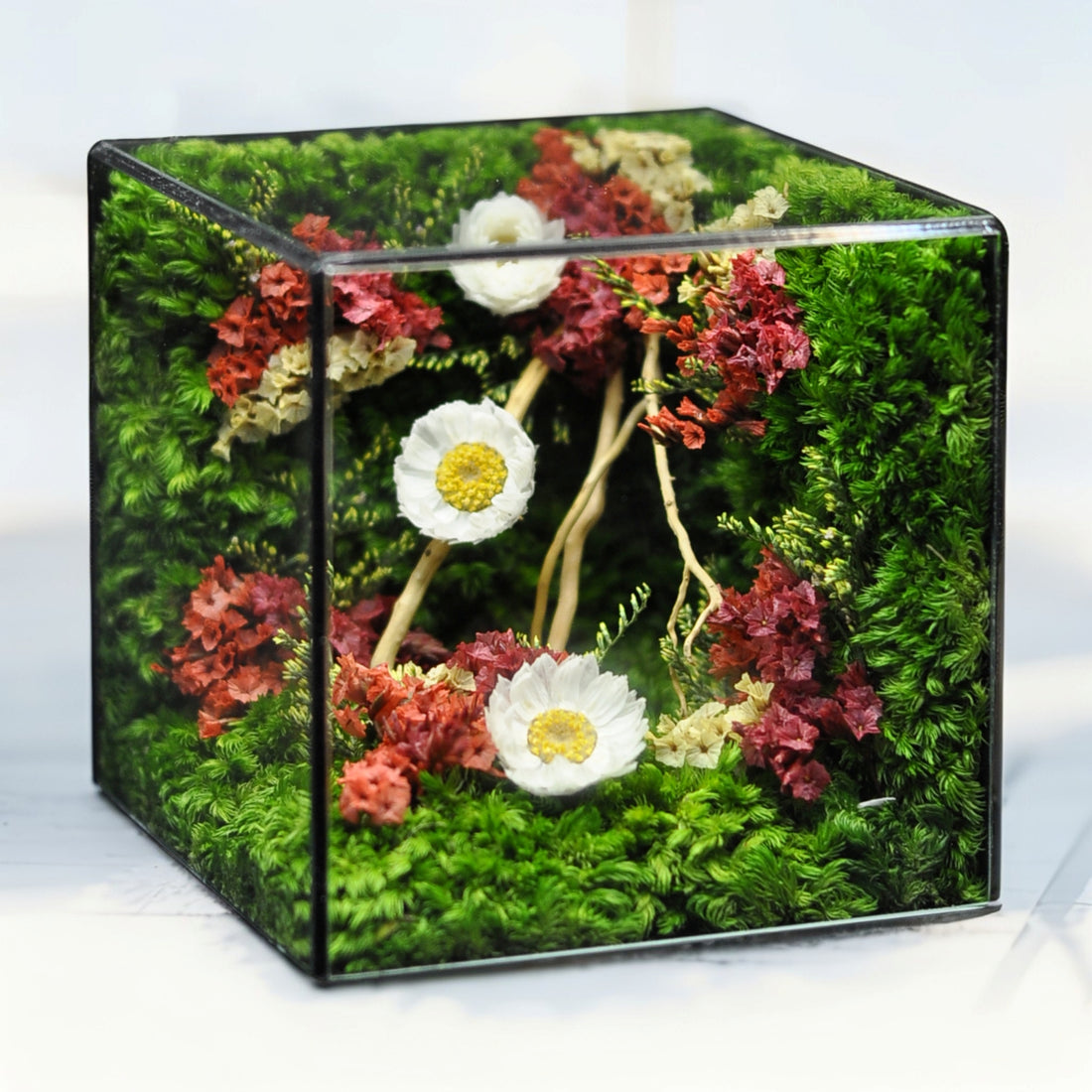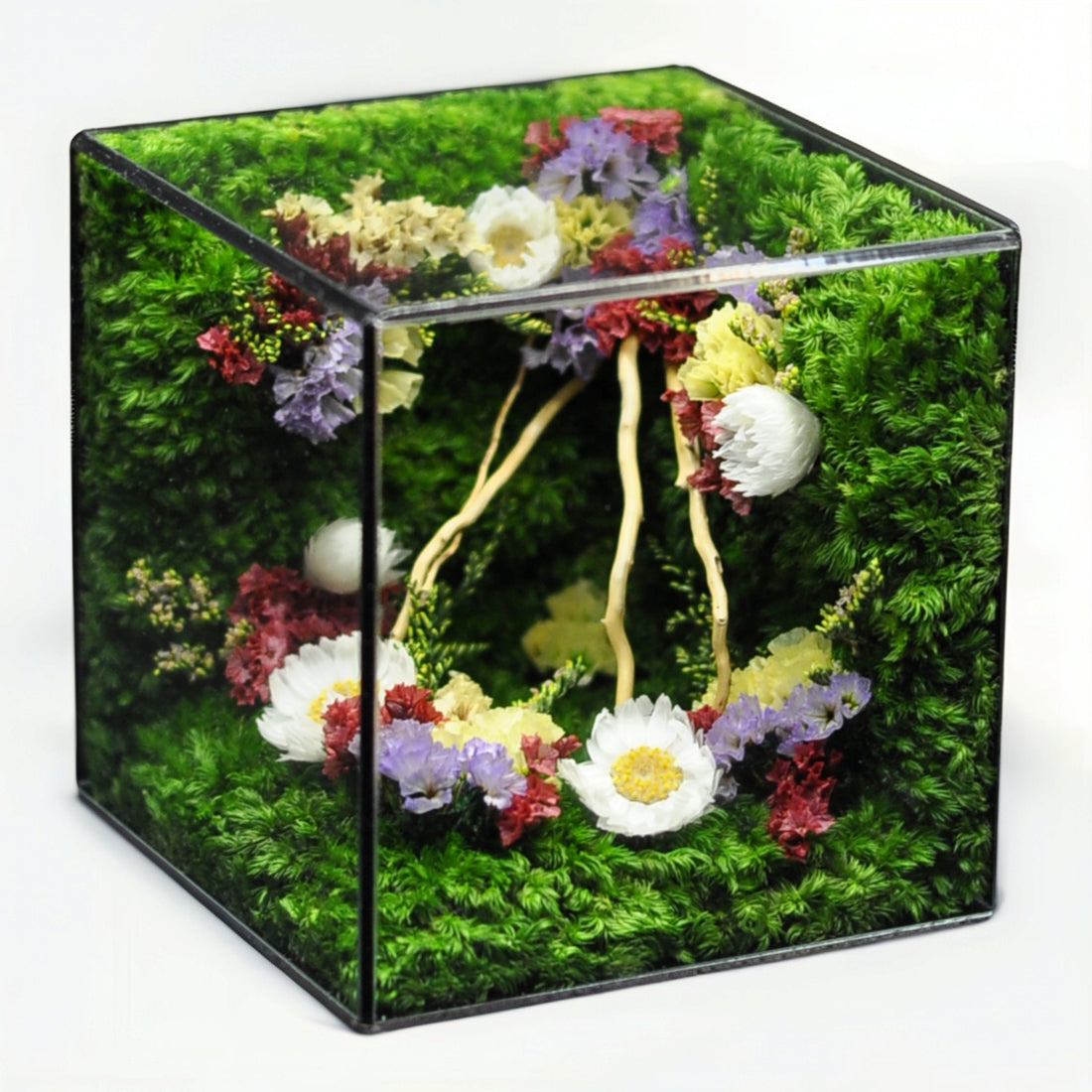Key Takeaways
Succulent terrariums have evolved into chic decor accents that seamlessly blend greenery with interior design, offering both visual appeal and low-maintenance greenery. Below are the key takeaways to help you set up, style, and maintain stunning terrariums that elevate your 2025 home decor.
- Align terrarium designs with your interior theme: Choose containers, color palettes, and decorative accents that harmonize with minimalist, bohemian, or mid-century modern spaces, turning your terrarium into a curated statement piece.
- Secure flawless growth with essential setup steps: Build a healthy foundation using well-draining containers, a pebble or activated charcoal layer, and a succulent-specific soil mix to prevent root rot and ensure aeration.
- Curate plant selections for visual and botanical harmony: Pick succulents with complementary sizes, textures, and light/water needs—then group them strategically to achieve balance and contrast.
- Streamline styling with premium terrarium kits: Opt for thoughtfully assembled kits that bundle glass vessels, soil, tools, and decorative elements, saving time while guaranteeing designer-quality results.
- Ensure succulent vitality with tailored care routines: Follow precise watering schedules, provide 4–6 hours of bright, indirect light, and troubleshoot common issues like overwatering or pests to keep plants thriving.
- Personalize accents for a signature decor touch: Incorporate decorative stones, moss, miniature figurines, or color-coordinated fillers that reflect your style and draw the eye to your terrarium centerpiece.
Armed with these foundational tips and creative styling strategies, you’re ready to dive into 10 gorgeous succulent terrarium ideas that will refresh and inspire your home decor.
Introduction
Creating a beautiful living space is easier than you might think, especially with the vibrant charm of succulent terrariums. These stylish green gems not only breathe life into any room but also require remarkably low maintenance, making them perfect for busy lifestyles. Imagine having a piece of nature as a centerpiece in your home that effortlessly complements your decor.
Combining the artistry of indoor gardening with modern design, succulent terrariums offer a unique way to express your individuality while showcasing your favorite plants. With a few simple tips on setup and maintenance, you can craft stunning arrangements that elevate your home decor in 2025. In this article, we’ll explore ten inspiring succulent terrarium ideas, along with essential guidance for creating and caring for these enchanting displays, ensuring your creations thrive and impress.
Ever wondered how to turn a simple glass vessel into a living work of art? A succulent terrarium is the perfect way to blend botanical beauty with interior design flair. In this guide, you’ll learn how to create a succulent terrarium step by step, from choosing the right container and soil mix to selecting the best succulents, styling your display, and maintaining your miniature ecosystem. Whether you’re a DIY home decorator, plant enthusiast, or interior design hobbyist, these expert tips, stylish ideas, and curated kit recommendations will inspire your next project.
Terrarium Setup Essentials
Container Selection & Style
Choosing the right container is the first step toward a show-stopping succulent terrarium. Your vessel’s shape, material, and finish not only affect aesthetics but also airflow, light filtration, and plant health.
- Open vs. Closed Glass Vessels
- Open containers (e.g., bowl, geometric cube) promote air circulation and suit sun-loving succulents like Echeveria.
- Semi-closed vessels (e.g., bell jar with side vents) work for humidity-tolerant varieties such as Haworthia but avoid fully sealed designs unless you leave the lid ajar.
- Material Choices
- Clear glass (2–3 mm thickness) showcases your arrangement and top dressing.
- Tinted or UV-filtering glass softens harsh light, protecting delicate leaves and adding mid-century modern appeal.
- Ceramic or metal frames introduce texture and contrast for bohemian or rustic décors.
- Matching to Decor Themes
- Minimalist: polished glass cube with clean edges.
- Bohemian: hand-blown orb in amber or rose hues, suspended by macramé rope.
- Mid-Century Modern: smoky teardrop with a brass frame.
Ready for a foolproof drainage system? Let’s layer the base for healthy roots.
Drainage Layer & Base Ingredients
A well-structured base prevents root rot by channeling excess water away from the soil.
- Bottom Layer (1–2 in / 2.5–5 cm pebbles or aquarium gravel) collects extra moisture.
- Middle Layer (½ in / 1.3 cm activated charcoal) filters toxins and inhibits mold growth.
- Top Layer: succulent soil mix (see next section).
Tip: Use natural bamboo charcoal for best filtration. Proper aeration here sets the stage for robust root systems—and a thriving terrarium.
Succulent-Specific Soil Mix
Succulents flourish in fast-draining, slightly acidic soil that mimics their native habitats.
- Core Components
- Coarse builder’s sand
- Perlite or pumice
- Cactus/succulent potting mix
- DIY Mix vs. Pre-Mixed Options
- DIY (1:1:1 sand:perlite:potting mix) allows full control over texture and pH. Ideal pH: 6.0–7.0 (test with a home kit and adjust with dolomitic lime or sulfur).
- Pre-mixed (e.g., Espoma Organic Cactus Mix) offers consistent porosity and a balanced nutrient profile.
- Inorganic Content Recommendation
Aim for 50–70% inorganic material, as advised by the Cactus & Succulent Society of America, to prevent water retention and encourage root oxygenation.
With the right soil mix primed, you’re set to assemble your terrarium masterpiece.
Step-by-Step Assembly Guide
Now that your base is ready, here’s how to create a succulent terrarium step by step:
- Clean your container with mild soap; rinse thoroughly and air-dry.
- Add the pebble layer, followed by charcoal.
- Pour in your soil mix to fill about one-third to one-half of the vessel.
- Plan your layout; use tweezers or tongs to create small wells for each plant.
Common Pitfall: Overpacking soil can suffocate roots—keep the mix loose around each plant. - Gently insert succulents, firming the soil lightly around their bases.
- Top with decorative gravel, colored sand, or moss for contrast.
- Lightly mist or water using the soak-and-dry method. If condensation collects on the glass, remove the lid or open the vessel for a few hours.
Essential tools: stainless-steel tongs, mini spatula, soft-bristle detail brush, fine mist spray bottle. For visual learners, check our photo series or short assembly video to follow along step by step.
Got everything ready? Let’s pick the perfect succulents!
Succulent Selection & Arrangement Techniques
Choosing the Best Succulents for Terrariums
Select compact, slow-growing species to maintain balance and ease of care.
- Echeveria spp. (rosette form; open-air setups)
- Haworthia spp. (striped, shade-tolerant; semi-closed vessels)
- Sedum morganianum (burro’s tail; hanging or bowl terrariums)
- Crassula ovata ‘Gollum’ (miniature jade; bright light)
- Sempervivum (hardy hens-and-chicks; temperature tolerant)
Match plant care requirements (light and water) to your chosen container’s airflow and humidity profile.
Plant Arrangement Principles
Effective arrangement transforms your terrarium into a captivating focal point.
- Scale & Proportion: Use a larger “anchor” plant surrounded by smaller companions.
- Rule of Thirds: Position focal succulents off-center for dynamic balance.
- Texture & Color Contrast: Pair smooth rosettes with spiky or trailing forms.
- Depth & Layering: Place taller species at the back and lower ones in front.
Combine these principles to highlight each succulent’s unique form.
Styling for Your Decor Theme
Infuse your interior design aesthetic into every detail.
- Minimalist: monochrome pebbles, black sand, glass cube, silver-toned plants.
- Bohemian: layered colored sands, macramé hangers, mixed-texture fillers.
- Mid-Century Modern: smoky glass, brass accents, geometric driftwood pieces.
- Coastal: white sand, small seashells, blue-green aloe varieties.
Ready to keep your terrarium vibrant? Let’s cover watering and light.
Care & Maintenance Tips
Ideal Watering Schedule
Ever noticed soggy or shriveled leaves? Proper watering is key.
- General Interval: every 2–4 weeks, adjusted by species, container size, and indoor humidity (30–50% common in homes).
- Soak-and-Dry Method: saturate soil fully, then let the mix dry out completely before re-watering.
- Signs to Watch:
- Overwatering: yellowing, mushy leaves
- Underwatering: shriveled, drooping foliage
Light & Placement Requirements
Succulents need the right light to avoid etiolation (stretching).
- Natural Light: east or south-facing windows with filtered sun for 4–6 hours daily.
- Supplemental Light: full-spectrum LED grow lights, 10–12 hours per day, position 6–12 in (15–30 cm) above plants.
- Avoid direct midday sun through glass to prevent heat scorch.
Troubleshooting Common Issues
- Root Rot: reduce watering, improve drainage, refresh soil every 12–18 months.
- Etiolation: move closer to bright light or add supplemental LEDs.
- Pests (mealybugs, aphids): isolate, treat with neem oil or insecticidal soap.
- Algae/Mold: remove top dressing, increase airflow, check charcoal efficacy.
- Temperature Fluctuations: avoid drafts or vents; maintain indoor temperatures between 65–75 °F (18–24 °C).
Proactive care keeps your succulent terrarium thriving.
10 Stylish Succulent Terrarium Ideas
- Minimalist Glass Cube Terrarium
- Clear cube vessel, pearl-white sand, black river stones, Echeveria ‘Elegans’. Complements Scandinavian or modern loft interiors.
- Bohemian Hanging Orb Terrarium
- Amber-tinted orb, macramé hanger, mixed Sedum and String of Pearls. Perfect for eclectic living rooms or sunrooms.
- Mid-Century Modern Geometric Terrarium
- Brass wireframe polyhedron, smoky glass panels, Haworthia and Crassula cluster. Accents vintage teak furniture and clean lines.
- Rustic Wooden Box Terrarium
- Reclaimed wood box with glass insert, moss groundcover, Sempervivum rosettes. Pairs beautifully with farmhouse or cabin décor.
- DIY Succulent Terrarium with Driftwood Accent
- Combine driftwood pieces with soil mix and succulents for a personalized, sculptural effect in any room.
- Terrarium Display on Open Shelving
- Group vessels of varied shapes and heights along a floating shelf to create a green centerpiece in hallways or living areas.
- Dining Table Centerpiece Terrarium
- Low-profile glass dish, curated plant clusters, decorative pebbles. A living conversation piece for dinner parties.
Key Takeaways
Succulent terrariums have evolved into chic decor accents that seamlessly blend greenery with interior design, offering both visual appeal and low-maintenance greenery. Below are the key takeaways to help you set up, style, and maintain stunning terrariums that elevate your 2025 home decor.
- Align terrarium designs with your interior theme: Choose containers, color palettes, and decorative accents that harmonize with minimalist, bohemian, or mid-century modern spaces, turning your terrarium into a curated statement piece.
- Secure flawless growth with essential setup steps: Build a healthy foundation using well-draining containers, a pebble or activated charcoal layer, and a succulent-specific soil mix to prevent root rot and ensure aeration.
- Curate plant selections for visual and botanical harmony: Pick succulents with complementary sizes, textures, and light/water needs—then group them strategically to achieve balance and contrast.
- Streamline styling with premium terrarium kits: Opt for thoughtfully assembled kits that bundle glass vessels, soil, tools, and decorative elements, saving time while guaranteeing designer-quality results.
- Ensure succulent vitality with tailored care routines: Follow precise watering schedules, provide 4–6 hours of bright, indirect light, and troubleshoot common issues like overwatering or pests to keep plants thriving.
- Personalize accents for a signature decor touch: Incorporate decorative stones, moss, miniature figurines, or color-coordinated fillers that reflect your style and draw the eye to your terrarium centerpiece.
Armed with these foundational tips and creative styling strategies, you’re ready to dive into 10 gorgeous succulent terrarium ideas that will refresh and inspire your home decor.
Introduction
Creating a beautiful living space is easier than you might think, especially with the vibrant charm of succulent terrariums. These stylish green gems not only breathe life into any room but also require remarkably low maintenance, making them perfect for busy lifestyles. Imagine having a piece of nature as a centerpiece in your home that effortlessly complements your decor.
Combining the artistry of indoor gardening with modern design, succulent terrariums offer a unique way to express your individuality while showcasing your favorite plants. With a few simple tips on setup and maintenance, you can craft stunning arrangements that elevate your home decor in 2025. In this article, we’ll explore ten inspiring succulent terrarium ideas, along with essential guidance for creating and caring for these enchanting displays, ensuring your creations thrive and impress.
Ever wondered how to turn a simple glass vessel into a living work of art? A succulent terrarium is the perfect way to blend botanical beauty with interior design flair. In this guide, you’ll learn how to create a succulent terrarium step by step, from choosing the right container and soil mix to selecting the best succulents, styling your display, and maintaining your miniature ecosystem. Whether you’re a DIY home decorator, plant enthusiast, or interior design hobbyist, these expert tips, stylish ideas, and curated kit recommendations will inspire your next project.
Terrarium Setup Essentials
Container Selection & Style
Choosing the right container is the first step toward a show-stopping succulent terrarium. Your vessel’s shape, material, and finish not only affect aesthetics but also airflow, light filtration, and plant health.
- Open vs. Closed Glass Vessels
- Open containers (e.g., bowl, geometric cube) promote air circulation and suit sun-loving succulents like Echeveria.
- Semi-closed vessels (e.g., bell jar with side vents) work for humidity-tolerant varieties such as Haworthia but avoid fully sealed designs unless you leave the lid ajar.
- Material Choices
- Clear glass (2–3 mm thickness) showcases your arrangement and top dressing.
- Tinted or UV-filtering glass softens harsh light, protecting delicate leaves and adding mid-century modern appeal.
- Ceramic or metal frames introduce texture and contrast for bohemian or rustic décors.
- Matching to Decor Themes
- Minimalist: polished glass cube with clean edges.
- Bohemian: hand-blown orb in amber or rose hues, suspended by macramé rope.
- Mid-Century Modern: smoky teardrop with a brass frame.
Ready for a foolproof drainage system? Let’s layer the base for healthy roots.
Drainage Layer & Base Ingredients
A well-structured base prevents root rot by channeling excess water away from the soil.
- Bottom Layer (1–2 in / 2.5–5 cm pebbles or aquarium gravel) collects extra moisture.
- Middle Layer (½ in / 1.3 cm activated charcoal) filters toxins and inhibits mold growth.
- Top Layer: succulent soil mix (see next section).
Tip: Use natural bamboo charcoal for best filtration. Proper aeration here sets the stage for robust root systems—and a thriving terrarium.
Succulent-Specific Soil Mix
Succulents flourish in fast-draining, slightly acidic soil that mimics their native habitats.
- Core Components
- Coarse builder’s sand
- Perlite or pumice
- Cactus/succulent potting mix
- DIY Mix vs. Pre-Mixed Options
- DIY (1:1:1 sand:perlite:potting mix) allows full control over texture and pH. Ideal pH: 6.0–7.0 (test with a home kit and adjust with dolomitic lime or sulfur).
- Pre-mixed (e.g., Espoma Organic Cactus Mix) offers consistent porosity and a balanced nutrient profile.
- Inorganic Content Recommendation
Aim for 50–70% inorganic material, as advised by the Cactus & Succulent Society of America, to prevent water retention and encourage root oxygenation.
With the right soil mix primed, you’re set to assemble your terrarium masterpiece.
Step-by-Step Assembly Guide
Now that your base is ready, here’s how to create a succulent terrarium step by step:
- Clean your container with mild soap; rinse thoroughly and air-dry.
- Add the pebble layer, followed by charcoal.
- Pour in your soil mix to fill about one-third to one-half of the vessel.
- Plan your layout; use tweezers or tongs to create small wells for each plant.
Common Pitfall: Overpacking soil can suffocate roots—keep the mix loose around each plant. - Gently insert succulents, firming the soil lightly around their bases.
- Top with decorative gravel, colored sand, or moss for contrast.
- Lightly mist or water using the soak-and-dry method. If condensation collects on the glass, remove the lid or open the vessel for a few hours.
Essential tools: stainless-steel tongs, mini spatula, soft-bristle detail brush, fine mist spray bottle. For visual learners, check our photo series or short assembly video to follow along step by step.
Got everything ready? Let’s pick the perfect succulents!
Succulent Selection & Arrangement Techniques
Choosing the Best Succulents for Terrariums
Select compact, slow-growing species to maintain balance and ease of care.
- Echeveria spp. (rosette form; open-air setups)
- Haworthia spp. (striped, shade-tolerant; semi-closed vessels)
- Sedum morganianum (burro’s tail; hanging or bowl terrariums)
- Crassula ovata ‘Gollum’ (miniature jade; bright light)
- Sempervivum (hardy hens-and-chicks; temperature tolerant)
Match plant care requirements (light and water) to your chosen container’s airflow and humidity profile.
Plant Arrangement Principles
Effective arrangement transforms your terrarium into a captivating focal point.
- Scale & Proportion: Use a larger “anchor” plant surrounded by smaller companions.
- Rule of Thirds: Position focal succulents off-center for dynamic balance.
- Texture & Color Contrast: Pair smooth rosettes with spiky or trailing forms.
- Depth & Layering: Place taller species at the back and lower ones in front.
Combine these principles to highlight each succulent’s unique form.
Styling for Your Decor Theme
Infuse your interior design aesthetic into every detail.
- Minimalist: monochrome pebbles, black sand, glass cube, silver-toned plants.
- Bohemian: layered colored sands, macramé hangers, mixed-texture fillers.
- Mid-Century Modern: smoky glass, brass accents, geometric driftwood pieces.
- Coastal: white sand, small seashells, blue-green aloe varieties.
Ready to keep your terrarium vibrant? Let’s cover watering and light.
Care & Maintenance Tips
Ideal Watering Schedule
Ever noticed soggy or shriveled leaves? Proper watering is key.
- General Interval: every 2–4 weeks, adjusted by species, container size, and indoor humidity (30–50% common in homes).
- Soak-and-Dry Method: saturate soil fully, then let the mix dry out completely before re-watering.
- Signs to Watch:
- Overwatering: yellowing, mushy leaves
- Underwatering: shriveled, drooping foliage
Light & Placement Requirements
Succulents need the right light to avoid etiolation (stretching).
- Natural Light: east or south-facing windows with filtered sun for 4–6 hours daily.
- Supplemental Light: full-spectrum LED grow lights, 10–12 hours per day, position 6–12 in (15–30 cm) above plants.
- Avoid direct midday sun through glass to prevent heat scorch.
Troubleshooting Common Issues
- Root Rot: reduce watering, improve drainage, refresh soil every 12–18 months.
- Etiolation: move closer to bright light or add supplemental LEDs.
- Pests (mealybugs, aphids): isolate, treat with neem oil or insecticidal soap.
- Algae/Mold: remove top dressing, increase airflow, check charcoal efficacy.
- Temperature Fluctuations: avoid drafts or vents; maintain indoor temperatures between 65–75 °F (18–24 °C).
Proactive care keeps your succulent terrarium thriving.
10 Stylish Succulent Terrarium Ideas
- Minimalist Glass Cube Terrarium
- Clear cube vessel, pearl-white sand, black river stones, Echeveria ‘Elegans’. Complements Scandinavian or modern loft interiors.
- Bohemian Hanging Orb Terrarium
- Amber-tinted orb, macramé hanger, mixed Sedum and String of Pearls. Perfect for eclectic living rooms or sunrooms.
- Mid-Century Modern Geometric Terrarium
- Brass wireframe polyhedron, smoky glass panels, Haworthia and Crassula cluster. Accents vintage teak furniture and clean lines.
- Rustic Wooden Box Terrarium
- Reclaimed wood box with glass insert, moss groundcover, Sempervivum rosettes. Pairs beautifully with farmhouse or cabin décor.
- DIY Succulent Terrarium with Driftwood Accent
- Combine driftwood pieces with soil mix and succulents for a personalized, sculptural effect in any room.
- Terrarium Display on Open Shelving
- Group vessels of varied shapes and heights along a floating shelf to create a green centerpiece in hallways or living areas.
- Dining Table Centerpiece Terrarium
- Low-profile glass dish, curated plant clusters, decorative pebbles. A living conversation piece for dinner parties.
- Vintage Teacup Terrarium Trio
- Repurposed ceramic teacups in coordinated color palettes, tiny rosettes, and moss accents. Charming for windowsills or bedside tables.
- Miniature Figurine Fairy Garden Terrarium
- Moss carpets, tiny succulents, whimsical figurines to tell a miniature garden story in a tabletop glass dome.
- Premium Kit Terrarium for Beginners
- All-in-one solution with glass vessel, soil mix, charcoal, pebbles, tools, and succulents—ideal for stress-free DIY projects or gifts.
These succulent terrarium ideas showcase how curated décor pieces can elevate any space.
Recommended Terrarium Kits & Materials
Top DIY Succulent Terrarium Kits
-
Thumbs Up! Terrarium Kit
Includes a clear glass vessel, activated charcoal, soil mix, decorative pebbles, tools, and plant labels.
👍 Pros: Complete kit ideal for beginners; includes easy-to-follow guide.
⚠️ Cons: Limited container styles; additional décor elements sold separately. -
Terra Collective Complete Kit
Features a premium geometric glass container, colored sands, curated succulent bundle, and stainless-steel tools.
👍 Pros: Stylish container and high-quality materials; great gift option.
⚠️ Cons: Higher price point; succulents may be small. -
Mr. Plant DIY Terrarium Kit
Offers a versatile acrylic globe, pre-measured soil and compostable liners, plus hand tools.
👍 Pros: Lightweight, shatterproof globe; eco-friendly liners.
⚠️ Cons: Acrylic may scratch over time; limited ventilation features. -
Succulent Source Starter Kit
Compact box with three popular succulents, organic soil packet, activated charcoal, and drip tray.
👍 Pros: Budget-friendly; includes live plants.
⚠️ Cons: Smaller container size; fewer decorative options.
Essential Tools & Decorative Supplies
- Precision tongs and tweezers for delicate placement
- Mini spatula and funnel set for neat layering
- Soft-bristle detail brush for cleaning glass surfaces
- Fine mist spray bottle for controlled watering
- Decorative pebbles, colored sand, driftwood pieces
- Macramé hangers or brass frames for suspended designs
Shop curated terrarium tools and supplies to bring your vision to life.
Expert Insights & Designer Tips
- “Group terrariums in odd numbers for visual interest,” advises interior designer Sara Nguyen.
- According to the National Association of Plant Growers, indoor-plant sales rose 12% in 2024, reflecting a booming interest in living décor.
- Stylist Jane L. refreshed her entryway console by arranging three terrariums—varying heights, mixed textures, and a unifying color palette—to create a layered, gallery-style display.
- Use tinted glass vessels to filter harsh sunlight and enhance mood lighting.
- Rotate terrariums seasonally, swapping in contrasting top-dressing colors like pastel sands or dark gravel.
- Incorporate height variety by placing terrariums on pedestals, floating shelves, or tiered stands.
- “Select succulents with similar care needs to simplify watering schedules,” recommends horticulturist Dr. Raul Martinez.
These insider suggestions blend form and function for standout succulent décor.
Frequently Asked Questions
How often should I water a succulent terrarium?
Water generally every 2–4 weeks, using the soak-and-dry method. Adjust frequency based on plant species, ambient humidity, and container size—smaller vessels may dry out faster.
What is the best soil mix for succulent terrariums?
Aim for a blend of coarse sand, perlite or pumice, and cactus potting mix with 50–70% inorganic content. Maintain a pH of 6.0–7.0 and refresh soil every 12–18 months for optimal drainage and nutrient balance.
Can succulents thrive in a closed terrarium?
Fully sealed terrariums often trap too much humidity, leading to rot. Instead, opt for open or semi-closed designs and include humidity-tolerant species like Haworthia for the best results.
Conclusion
Creating a succulent terrarium is not only a rewarding DIY project but also a stylish way to enhance your living space. This guide has outlined essential steps, from selecting the ideal container that complements your décor to understanding the importance of soil composition and drainage for healthy plant growth. The careful assembly and arrangement principles discussed ensure that your terrarium not only thrives but also serves as a beautiful focal point in your home.
By following these expert tips and incorporating your personal aesthetic, you'll craft a harmonious and vibrant mini-ecosystem. As interest in indoor gardening continues to rise, aided by the evidence of increased plant sales and the beauty of living décor, now is the perfect time to start your succulent terrarium journey. What unique design will you create to reflect your style and bring nature indoors?
Frequently Asked Questions (FAQ)
Q: How often should I water a succulent terrarium?
A: Water generally every 2–4 weeks using the soak-and-dry method, then let the soil fully dry before re-watering. Adjust frequency based on species, ambient humidity, and container size—smaller vessels dry out faster.
Q: What is the best soil mix for succulent terrariums?
A: Use a blend of coarse builder’s sand, perlite or pumice, and cactus/succulent potting mix with 50–70% inorganic content. Aim for a pH of 6.0–7.0 and refresh the soil every 12–18 months for optimal drainage and nutrient balance.
Q: Can succulents thrive in a closed terrarium?
A: Fully sealed terrariums often trap excess humidity, which can cause rot. Instead, choose open or semi-closed vessels and include humidity-tolerant species like Haworthia if you use a partially closed design.
Q: What types of containers work best for succulent terrariums?
A: Open glass vessels (e.g., bowls or geometric cubes) promote airflow for sun-loving succulents; semi-closed jars with side vents suit humidity-tolerant varieties. Clear glass showcases your plants, tinted or UV-filtering glass softens light, and ceramic or metal frames add texture for styled décor.
Q: How do I create a proper drainage layer for a succulent terrarium?
A: Start with a 1–2 inch layer of pebbles or aquarium gravel to collect moisture, add about ½ inch of activated charcoal to filter toxins and inhibit mold, then top with your succulent soil mix. Good aeration at the base prevents root rot.
Q: Which succulents are ideal for terrariums?
A: Choose compact, slow-growing species such as Echeveria (rosette form), Haworthia (shade-tolerant), Sedum morganianum (burro’s tail), Crassula ovata ‘Gollum’ (miniature jade), and Sempervivum (hens-and-chicks). Match their light and humidity needs to your container’s design.
Q: How can I style my succulent terrarium to match different decor themes?
A:
- Minimalist: monochrome pebbles or black sand in a glass cube with silver-toned plants.
- Bohemian: layered colored sands, macramé hangers, mixed-texture fillers.
- Mid-Century Modern: smoky glass vessel, brass accents, geometric driftwood.
- Coastal: white sand, small seashells, blue-green aloe varieties.
Q: What tools are essential for creating a succulent terrarium?
A: Stainless-steel tongs or tweezers for plant placement, a mini spatula or funnel for layering, a soft-bristle detail brush for cleaning glass, and a fine mist spray bottle for controlled watering.



